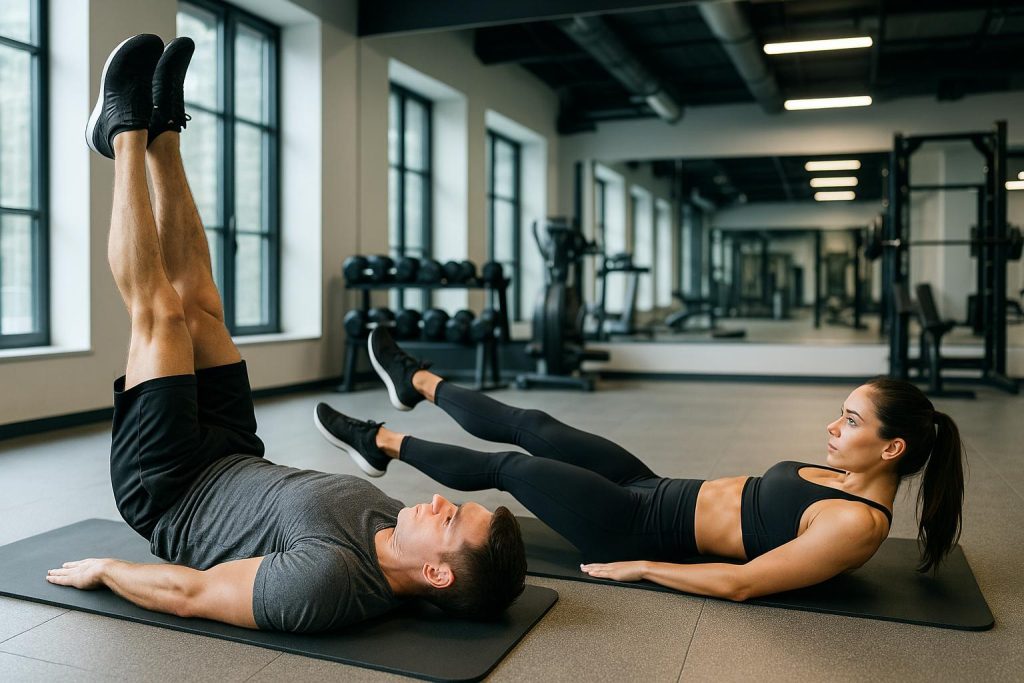Leg raises generally offer greater abdominal strength and deeper core activation, while flutter kicks are ideal for building endurance, lower-ab muscle tone, and adding mild cardio to your workout. The best choice depends on your fitness goals, experience level, and how you plan to use these exercises in your routine.
Understanding the key differences between leg raises and flutter kicks helps you choose the right move for effective, safe, and results-driven ab workouts. In this guide, you’ll find the latest research, expert tips, and practical advice—so you can make the best decision for your core training.

What Are Leg Raises?
Leg raises are a classic ab exercise where you lie on your back and lift both legs off the ground while keeping them straight. This move is famous for targeting the rectus abdominis (your “six-pack” muscles), along with your hip flexors and lower back.
- Best for building core strength and muscle definition
- Strengthens lower abs and hip flexors
- Improves core stability and posture
- Higher intensity; requires more control and good form
Latest Data:
A 2023 EMG analysis found that leg raises produce greater rectus abdominis activation than most other core exercises, including planks (PubMed, 2023). This makes them highly effective for ab development.
What Are Flutter Kicks?
Flutter kicks are a dynamic exercise where you alternate your legs up and down quickly, keeping your core engaged and legs straight. This move not only works your lower abs but also challenges your hip flexors, quads, and glutes.
- Best for endurance, muscle tone, and functional strength
- Provides a mild cardio effect and improves muscular stamina
- Lower impact; easier for beginners to learn
- Engages abs, hip flexors, and lower body muscles
Recent Findings:
According to fitness experts, flutter kicks improve core endurance and help tone the lower abs—especially when done for longer sets or as part of a circuit (Greatist, 2024, Gymless, 2024).
Leg Raises vs. Flutter Kicks: Key Differences
| Feature | Leg Raises | Flutter Kicks |
|---|---|---|
| Main Focus | Core strength, muscle building | Endurance, muscle tone |
| Muscles Worked | Lower & upper abs, hip flexors | Lower abs, hip flexors, quads, glutes |
| Cardio Effect | Minimal | Moderate |
| Intensity | Higher | Moderate |
| Form Needed | High (risk of back strain if poor) | Medium (risk of lower-back arching) |
| Ideal For | Strength, posture, core definition | Endurance, circuits, variety |
Pro Tip:
Leg raises build strength and ab size, while flutter kicks improve muscular stamina and can be performed for longer periods.
Which Should You Choose? Leg Raises or Flutter Kicks
Choose Leg Raises if you want:
- Stronger, more defined abs
- To improve your core strength for advanced exercises
- A move that challenges your hip flexors and lower back
- You can maintain proper form without back pain
Choose Flutter Kicks if you want:
- To improve core endurance and stamina
- A lower-impact exercise you can do for longer durations
- A mild cardio boost during ab circuits
- An accessible move suitable for all fitness levels
Expert Recommendation:
Most trainers suggest combining both moves in your ab routine for best results. Mixing static (leg raises) and dynamic (flutter kicks) core work delivers balanced strength and endurance (Squatwolf, 2024).
How to Do Leg Raises and Flutter Kicks Safely
How to Do Leg Raises
- Lie flat on your back with your legs straight and arms by your sides.
- Press your lower back into the floor.
- Slowly lift both legs to a 90-degree angle.
- Lower your legs back down without touching the ground.
- Repeat for 8–15 reps, focusing on control.
Tip: Place your hands under your hips for added lower-back support.
How to Do Flutter Kicks
- Lie on your back, hands under your glutes.
- Lift both legs about 6 inches off the floor.
- Alternate kicking your legs up and down rapidly.
- Keep your core engaged and don’t let your back arch.
- Continue for 20–40 seconds per set.
Tip: Breathe evenly and keep the movement small for better control.
Real-World Examples & FAQ
Example Routine:
Try 3 sets of 10–12 leg raises, followed by 3 sets of 30 seconds flutter kicks, 2–3 times per week.
Common Questions:
- Q: Can beginners do leg raises?
A: Yes, but start with bent-knee raises or reduce range to protect your lower back. - Q: Are flutter kicks good for burning belly fat?
A: They help strengthen your core and burn some calories, but overall fat loss requires a calorie deficit and full-body exercise (CDC, 2024). - Q: Should I do both exercises in one session?
A: Yes! Mixing both ensures well-rounded core development.
Conclusion
Both leg raises and flutter kicks are valuable core exercises—each with unique benefits.
Leg raises: Build strength and definition
Flutter kicks: Boost endurance and dynamic stability
For a strong, balanced core, include both exercises in your weekly routine. Focus on proper form, and gradually increase your reps and time as you progress.
